- Home
- Raymond Chandler
The World of Raymond Chandler: In His Own Words
The World of Raymond Chandler: In His Own Words Read online
ALSO BY BARRY DAY
My Life with Noël Coward
(with Graham Payn)
Noël Coward: The Complete Lyrics
Noël Coward: In His Own Words
Noël Coward: Complete Sketches and Parodies
Theatrical Companion to Coward
(with Sheridan Morley)
The Unknown Noël: New Writing from the Coward Archives
Coward on Film: The Cinema of Noël Coward
The Letters of Noël Coward
The Noël Coward Reader
The Complete Verse of Noël Coward
Star Quality: The Treasures of Noël Coward
This Wooden “O”: Shakespeare’s Globe Reborn
Oscar Wilde: A Life in Quotes
P. G. Wodehouse: In His Own Words
P. G. Wodehouse: The Complete Lyrics
Johnny Mercer: The Complete Lyrics
(with Robert Kimball)
Dorothy Parker: In Her Own Words
Sherlock Holmes: In His Own Words and the Words of Those Who Knew Him
Sherlock Holmes and the Shakespeare Globe Murders
Sherlock Holmes and the Alice in Wonderland Murders
Sherlock Holmes and the Copycat Murders
Sherlock Holmes and the Apocalypse Murders
Sherlock Holmes and the Seven Deadly Sins Murders
Murder, My Dear Watson
(contributor)
THIS IS A BORZOI BOOK
PUBLISHED BY ALFRED A. KNOPF
Copyright © 2014 by Barry Day
All rights reserved. Published in the United States by Alfred A. Knopf, a division of Random House LLC, New York, and in Canada by Random House of Canada Limited, Toronto, Penguin Random House companies.
www.aaknopf.com
Knopf, Borzoi Books, and the colophon are registered trademarks of Random House LLC.
Library of Congress Cataloging-in-Publication Data
Chandler, Raymond, 1888–1959
The world of Raymond Chandler : in his own words / edited by Barry Day.
pages cm
ISBN 978-0-385-35236-9 (hardback)—ISBN 978-0-385-35237-6 (eBook)
1. Chandler, Raymond, 1888–1959. 2. Authors, American—20th century—Biography. 3. Detective and mystery stories—Authorship. I. Day, Barry, editor of compilation. II. Title.
PS3505.H3224Z46 2014
813′.52—dc23
[B] 2014009321
Front-of-jacket photograph: Raymond Chandler © TopFoto / The Image Works
Spine-of-jacket image: The Blue Dahlia © 1946 Paramount Pictures, Inc.
Courtesy of Universal Studios Licensing LLC. Print: Photofest
Design by Carol Devine Carson
Book design by Cassandra J. Pappas
v3.1
Dedicated to the man who brought magic to the mean streets
And to Lynne (who makes magic on a daily basis)
Contents
Cover
Other Books by This Author
Title Page
Copyright
Dedication
Illustrations
Chronology
Introduction
One A MAN WITH NO HOME
Two WRITING (1) Turning Pulp into Gold
Three PHILIP MARLOWE Investigations
Four COPS … AND CRIME
Five THE CITY OF THE ANGELS
Six HOLLYWOOD
Seven DAMES … THE LITTLE SISTERS
Eight WRITING (2) Making Magic
Nine ENVOI A Long Goodbye … to the Big Sleep
Permissions and Thanks
Index
Illustrations
fm1.1 Chandler switches from Black Mask to Dime Detective
fm1.2 Trouble Is My Business cover
1.1 Raymond Chandler in Los Angeles, 1940
1.2 Chandler, 1890
1.3 Florence Thornton Chandler
1.4 Chandler, c. 1896
1.5 Front view of Dulwich College
1.6 Aerial view of Dulwich College
1.7 Chandler as a student at Dulwich
1.8 Chandler’s Dulwich College class, 1903
1.9 Chandler, 1905
1.10 Chandler, 1906
1.11 Chandler in Gordon Highlander uniform
1.12 Chandler, 1918, British Columbia Regiment
1.13 Chandler, 1918, R.A.F.
1.14 Chandler after the war
1.15 With his mother at Cypress Grove, California
1.16 Chandler, 1920s
1.17 Cissy Pascal
2.1 Cissy as an artist’s model
2.2 The Chandlers’ marriage license
2.3 The Accounting Department of the Dabney Oil Syndicate, 1920
2.4 Black Mask illustration
2.5 Black Mask cover
2.6 The Black Mask gang
2.7 Dashiell Hammett
2.8 James M. Cain
2.9 Erle Stanley Gardner
2.10 Ernest Hemingway
2.11 F. Scott and Zelda Fitzgerald
2.12 W. Somerset Maugham
2.13 Eugene O’Neill
2.14 Alfred A. Knopf
2.15 Blanche Knopf
2.16 The Big Sleep jacket, 1939
3.1 Lauren Bacall and Humphrey Bogart in The Big Sleep, 1946
3.2 Greystone Mansion
3.3 The Big Sleep, Hamish Hamilton, 1939
3.4 The Lady in the Lake, Hamish Hamilton, 1944
3.5 Chandler, 1939
3.6 Audrey Totter and Robert Montgomery in La Dame du Lac, 1946
3.7 Robert Montgomery as Philip Marlowe
3.8 The Dionne Quintuplets
3.9 Camel cigarettes
3.10 Marlowe’s “assistants”: the Luger P08, Colt .38, and Smith & Wesson .38
3.11 Marmon 34 Touring Car, Oldsmobile Series 60, 1937 Chrysler Airflow
3.12 Marlowe’s apartment building on Hightower Drive
3.13 Old Forester scotch
3.14 Huggins-Young coffee
3.15 Jacket for The Little Sister
4.1 LAPD badge
4.2 Prohibition—the Volstead Act
4.3 Police cruiser, c. 1950
5.1 Los Angeles at night
5.2 Ross Macdonald
5.3 Los Angeles at night
5.4 Grauman’s Chinese Theatre
5.5 The house in which Joe Brody was murdered in The Big Sleep
5.6 Wilshire Boulevard, 1935
5.7 Hollywood Boulevard, 1937
5.8 Brown Derby restaurant
5.9 Vine Street, 1953
5.10 City Hall and Union Station
5.11 The Beverly Hills Hotel
5.12 Richfield Building, 1955
5.13 Bunker Hill
5.14 Art deco Sunset Tower
5.15 Bay City
5.16 Chandler’s house at 6005 Camino de la Costa, La Jolla, California
5.17 The smog of Los Angeles
6.1 Hollywoodland sign
6.2 The Bronson Gate at Paramount
6.3 Chandler chats with Fred MacMurray
6.4 Chandler and Billy Wilder, 1943
6.5 Phyllis Dietrichson and Walter Neff, Double Indemnity, 1944
6.6 Letter to James M. Cain from Chandler
6.7 Cain’s reply
6.8 Walter Neff in the death chamber
6.9 Veronica Lake as Joyce Harwood in The Blue Dahlia
6.10 Lake with Alan Ladd on the movie poster for The Blue Dahlia
6.11 John Houseman
6.12 Chandler in 1945
6.13 Paul Henreid lights up Bette Davis in Warner Bros.’ 1942 Now, Voyager
6.14 Schwab’s Pharmacy on Sunset and Crescent Heights
6.15 Dick Powell plays Marlowe opposite Claire Trevor in Murder, My Sweet, 1944
6.16 Howard Hawks
6.17 The Lady in the Lake, 1946
6.18 Farley Granger and Robert Walker, Strangers on a Train, 1951
7.1 Veronica Lake
7.2 Lauren Bacall as Vivian Regan in The Big Sleep, 1946
7.3 Audrey Totter as Adrienne Fromsett in The Lady in the Lake
7.4 Martha Vickers as Carmen Sternwood in The Big Sleep
7.5 Claire Trevor as Mrs. Grayle/Velma
7.6 Nancy Guild as Merle Davis in The Brashear Doubloon
7.7 Nina Van Pallandt as Eileen Wade in The Long Goodbye
7.8 The mature Taki with the mature Chandler, mid-1930s
7.9 Ray and Taki at work in La Jolla, c. 1948
7.10 April 9, 1948
7.11 Taki as a kitten, 1932
8.1 The Simple Art of Murder jacket
8.2 The Simple Art of Murder hardcover
8.3 Chandler’s corrections for a draft of his sixth novel
8.4 Dame Agatha Christie
8.5 One of the many foreign-language editions
9.1 The Long Goodbye
9.2 Helga Greene
9.3 Natasha Spender
9.4 Foreign editions of Chandler’s books
9.5 Chandler shortly before his death, 1959
9.6 Angel’s Flight, Bunker Hill, 1956, by William Reagh
Chronology
1888 Raymond Thornton Chandler born July 23 in Chicago.
1895 Chandler’s parents divorce. His mother takes him to London.
1900 He attends Dulwich College, a traditional English public school.
1905 Leaves school and goes to Paris to study French, and later to Munich.
1907 He returns to England and becomes a naturalized British subject. He then passes the Civil Service exam with distinction and goes to work for the Admiralty.
1908 After a few months he decides to leave and become a writer.
1909–1911 Works as a reporter and occasionally contributes pieces to The Westminster Gazette and The Academy.
1912 He returns to America, travels around and finds himself in Los Angeles, where he moves from one job to another.
1917 He enlists in the Canadian Expeditionary Force and goes back to England.
1918 Serves at the front in France for three months before being transferred to the Royal Air Force.
1919 He is discharged now that the war is over and returns to the West Coast.
Begins an affair with Cissy Pascal, a married woman eighteen years his senior.
1920 Cissy divorces her husband but she and Chandler delay their own marriage because his mother disapproves, due to the age disparity.
1922 Chandler takes a clerical job with the Dabney Oil Syndicate, where he will eventually rise to the position of vice president.
1924 His mother dies and he marries Cissy.
1925–1931 The couple moves restlessly around the Los Angeles area and Chandler begins to drink heavily.
1932 He is fired from Dabney as a result of his drinking.
Decides to concentrate on his writing and begins to work in the area of “pulp.”
1933 His first story, “Blackmailers Don’t Shoot,” is published in the magazine Black Mask. Chandler is now forty-five.
1934 “Smart Aleck Kill” and “Finger Man” follow in Black Mask.
1935 “Killer in the Rain,” “Nevada Gas” and “Spanish Blood.”
1936 “Guns at Cyrano’s,” “The Man Who Liked Dogs,” “Goldfish,” “The Curtain” and “Try the Girl.”
1937 … and Chandler switches from Black Mask to Dime Detective and publishes “Mandarin’s Jade.” (illustrations credit fm1.1)
Trouble Is My Business began life as a “John Dalmas” story in Dime Detective. By the time it appeared in book form, John Dalmas was Philip Marlowe. (illustrations credit fm1.2)
1938 “Red Wind,” “The King in Yellow” and “Bay City Blues.”
He begins writing his first novel, The Big Sleep, using reworked elements from some of the earlier stories. In doing so, he creates the character Philip Marlowe. The job takes him three months.
1939 The Big Sleep is published by Alfred A. Knopf.
“Pearls Are a Nuisance” and “Trouble Is My Business” are published in Dime Detective.
“I’ll Be Waiting” is published in The Saturday Evening Post.
The Chandlers move to La Jolla, California.
1940 The peripatetic couple moves to Monrovia and then to Arcadia.
Farewell, My Lovely is published by Knopf.
From Arcadia, the Chandlers move to Santa Monica, which becomes “Bay City” in Chandlerworld.
1941 RKO pays Chandler $2,000 for the movie rights to Farewell, My Lovely. (The first version, The Falcon Takes Over—part of an ongoing “B” series—is released the following year; the second, Murder, My Sweet, in 1944.)
1942 Chandler finishes The High Window and sells the movie rights to 20th Century Fox for $3,500. (The first version, Time to Kill, is released in 1943; the second version, The Brasher Doubloon, in 1947.)
The High Window is published by Knopf.
1943 Chandler signs with Paramount to work on the screenplay of James M. Cain’s Double Indemnity with director Billy Wilder. He is paid $1,750 a week—a far cry from the one cent per word he received from Black Mask.
The Lady in the Lake is published by Knopf.
His essay “The Simple Art of Murder” is published in The Atlantic Monthly.
1944 Double Indemnity is released and becomes a considerable success.
Chandler is nominated for an Oscar for his screenplay.
1945 He continues writing for Paramount but The Blue Dahlia is the only other project to achieve success.
MGM signs him to work on the screenplay of The Lady in the Lake, but he is dissatisfied with the way the film is developing and leaves before the work is finished, insisting that his name be removed from the credits.
1946 The Blue Dahlia is released and Chandler is again nominated for an Academy Award for the screenplay.
Warner Bros. releases The Big Sleep.
The Chandlers return to La Jolla.
1948 Chandler leaves Knopf for Houghton Mifflin.
1949 The Little Sister is published.
1950 Chandler begins work with Alfred Hitchcock on Strangers on a Train at Warner Bros., but the two men don’t get along and Chandler is replaced.
1951 Chandler begins writing The Long Goodbye.
1952 The Chandlers make an extended stay in England.
Chandler’s health is beginning to deteriorate.
1953 The Long Goodbye is published by Houghton Mifflin.
1954 Cissy Chandler dies. Chandler goes into deep mourning and alcohol-fueled depression.
1955 He sells the La Jolla home and moves to London.
1956 Returns to the U.S., being now a tax exile from the U.K.
1957 In New York he is hospitalized because of his heavy drinking.
He finishes Playback.
1958 London again … and hospital again.
Playback published.
One more return to La Jolla … and several more returns to the hospital.
1959 Chandler proposes marriage to his agent, Helga Greene. She accepts but her father’s antipathy sends Chandler into the final spiral of depression.
He returns to New York to accept the presidency of Mystery Writers of America.
Shortly afterward, in La Jolla, he contracts pneumonia and dies in the Scripps Clinic there.
Chandler is buried in the Mount Hope Cemetery in San Diego, sleeping The Big Sleep.
Introduction
I’m just a fellow who jacked up a few pulp novelettes into book form … All I’m looking for is an excuse for certain experiments in dramatic dialogue. To justify them I have to have plot and situation; but fundamentally I care almost nothing about either. All I really care about is what Errol Flynn calls “the music,” the lin
es he has to speak.
Letter to Frederick Lewis Allen—May 7, 1948
A writer who hates the actual writing, who gets no joy out of the creation of magic by words, to me is simply not a writer at all … How can you hate the magic which makes a paragraph or sentence or a line of dialogue or a description something in the nature of a new creation?
Letter to Hamish Hamilton—September 19, 1951
This is not another biography of Raymond Chandler—or only incidentally.
The salient facts of his life are by now well known to any Chandler enthusiast. Ricocheting in his early years between small-town America and an English public (private) school, carefully observing both cultures but feeling he really belonged to neither, he remained “a man with no home,” as he described himself in later life.
Nonetheless, the experience developed in him a sense of objectivity as he learned the true meaning of “divided by a common language.”
Words fascinated him from the first, and his “classical” education in Latin and Greek made him value them for their precise meaning. Only then could you play with them knowingly, as he did when he came to write his “pulp” stories and had to learn a new language called “American.”
As his skill developed and he became—along with Dashiell Hammett—one of the doyens of “hard-boiled fiction,” it wasn’t his plots or supporting characters that set him apart. It was his use of language. He was simply the most literate in his league, and he had little patience with contemporaries—such as James M. Cain and even Hemingway—who, in his view, were lazy with language.
He was the master of the exaggerated simile—“I think I rather invented the trick,” he once said. And even when he later admitted that he sometimes took the trick too far—“I did run them into the ground”—the words still sang on the page. He was happy to yield the palm to the Agatha Christies and Rex Stouts when it came to ingenuity of construction, but “their words don’t get up and walk—mine do!”
It seems appropriate, then, to take Chandler at his own words. To let him, through quotation and with a little linkage here and there, analyze the people and places that dominate his work … the Dames, the Cops, the Crooks … the places, like Los Angeles with its “mean streets,” that become characters in themselves … and never forgetting a man called Marlowe.

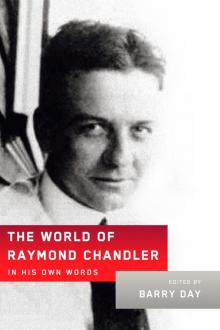 The World of Raymond Chandler: In His Own Words
The World of Raymond Chandler: In His Own Words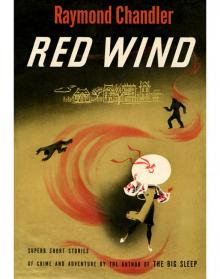 Red Wind: A Collection of Short Stories
Red Wind: A Collection of Short Stories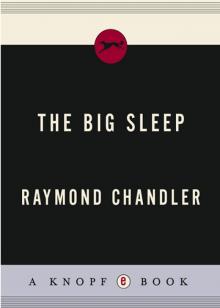 The Big Sleep
The Big Sleep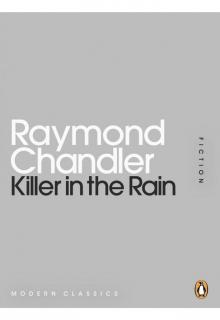 Killer in the Rain
Killer in the Rain Playback
Playback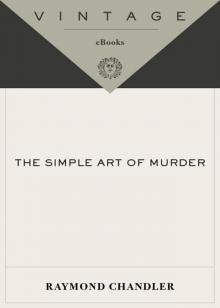 The Simple Art of Murder
The Simple Art of Murder The Bronze Door
The Bronze Door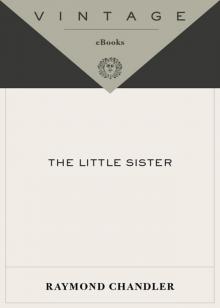 The Little Sister
The Little Sister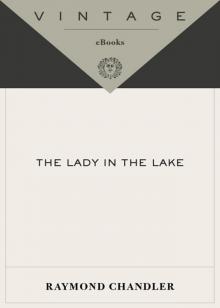 The Lady in the Lake
The Lady in the Lake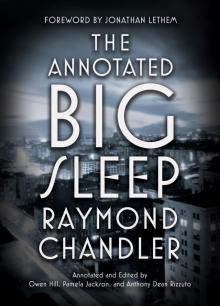 The Annotated Big Sleep
The Annotated Big Sleep The Collected Raymond Chandler
The Collected Raymond Chandler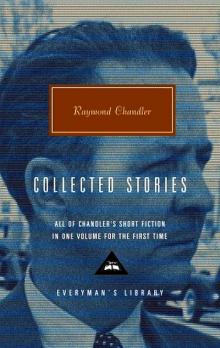 Collected Stories (Everyman's Library)
Collected Stories (Everyman's Library)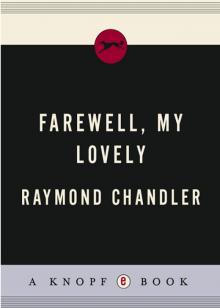 Farewell, My Lovely
Farewell, My Lovely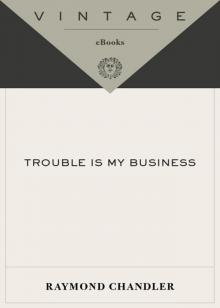 Trouble Is My Business
Trouble Is My Business The Long Goodbye
The Long Goodbye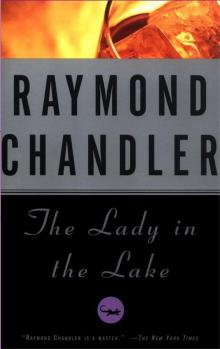 The Lady in the Lake pm-4
The Lady in the Lake pm-4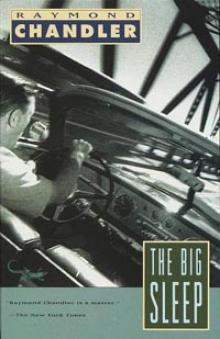 The Big Sleep pm-1
The Big Sleep pm-1 The World of Raymond Chandler
The World of Raymond Chandler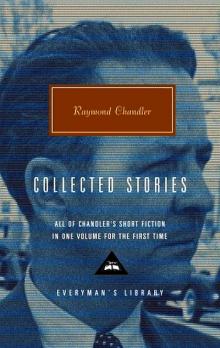 Collected Stories of Raymond Chandler
Collected Stories of Raymond Chandler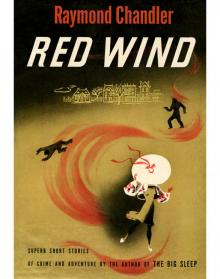 Red Wind
Red Wind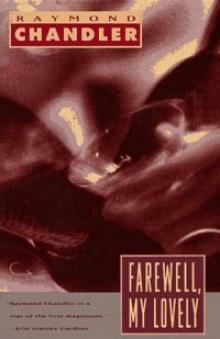 Farewell, My Lovely pm-2
Farewell, My Lovely pm-2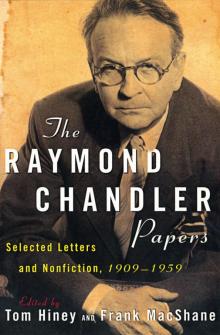 The Raymond Chandler Papers: Selected Letters and Nonfiction, 1909–1959
The Raymond Chandler Papers: Selected Letters and Nonfiction, 1909–1959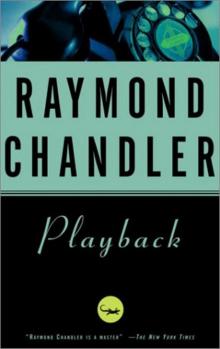 Playback pm-7
Playback pm-7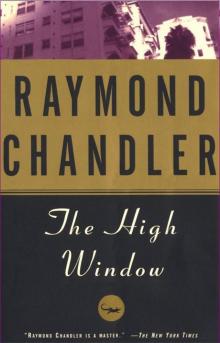 The High Window pm-3
The High Window pm-3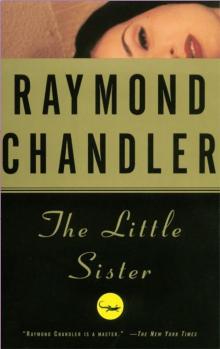 The Little Sister pm-5
The Little Sister pm-5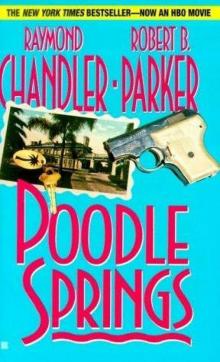 Poodle Springs (philip marlowe)
Poodle Springs (philip marlowe)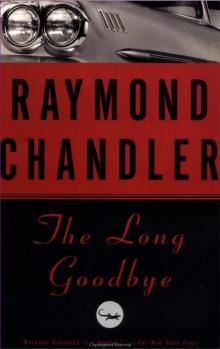 The Long Goodbye pm-6
The Long Goodbye pm-6